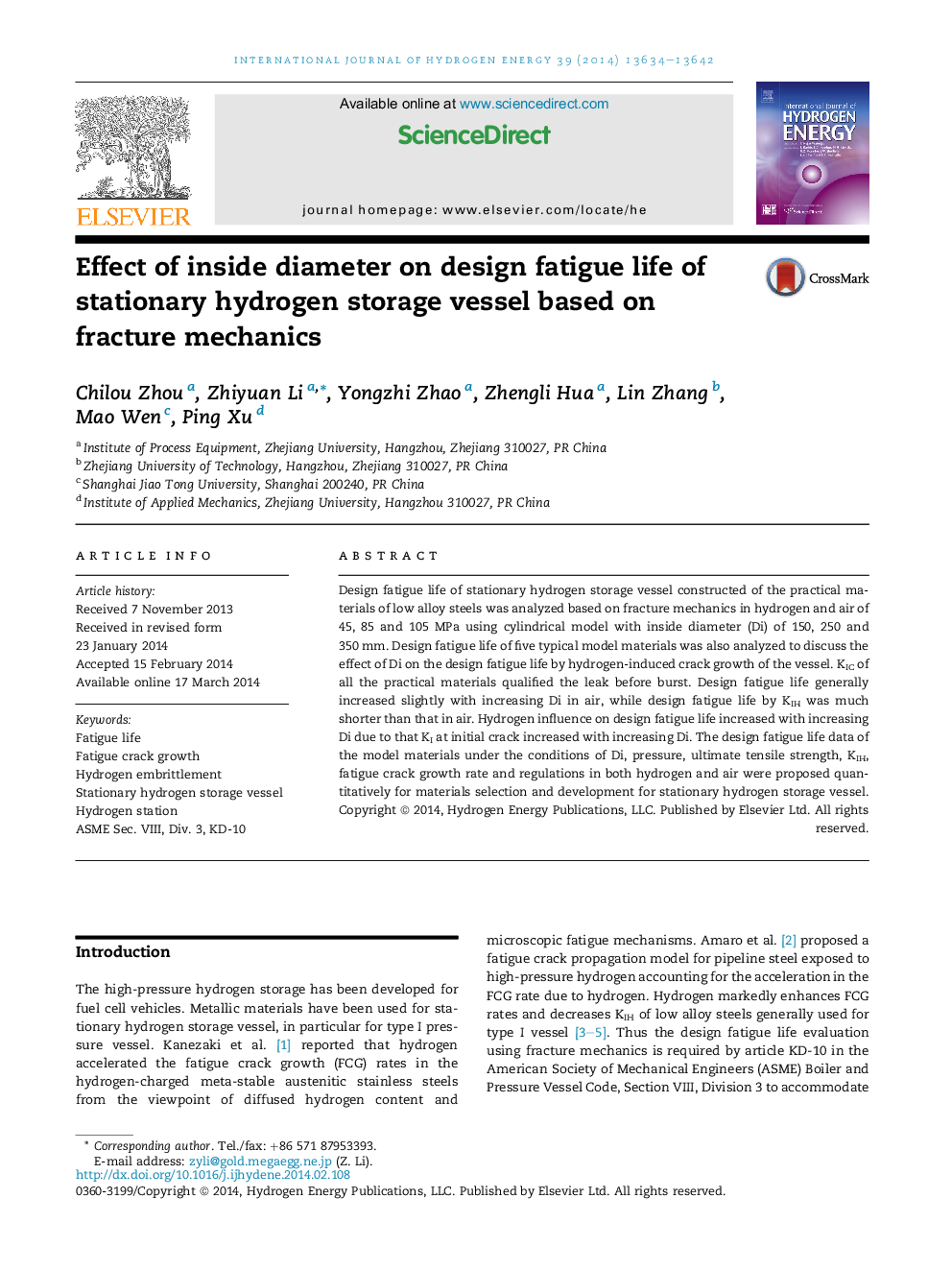| Article ID | Journal | Published Year | Pages | File Type |
|---|---|---|---|---|
| 1272665 | International Journal of Hydrogen Energy | 2014 | 9 Pages |
•Hydrogen influence on design fatigue life increased with increasing inside diameter.•Design fatigue life data can contribute to the materials selection for hydrogen storage vessel.•KIC for LBB decreases with decreasing inside diameter.•Design fatigue life is discussed by five regulations available in the world.•This work is conducive to support the development of new standards for hydrogen storage service.
Design fatigue life of stationary hydrogen storage vessel constructed of the practical materials of low alloy steels was analyzed based on fracture mechanics in hydrogen and air of 45, 85 and 105 MPa using cylindrical model with inside diameter (Di) of 150, 250 and 350 mm. Design fatigue life of five typical model materials was also analyzed to discuss the effect of Di on the design fatigue life by hydrogen-induced crack growth of the vessel. KIC of all the practical materials qualified the leak before burst. Design fatigue life generally increased slightly with increasing Di in air, while design fatigue life by KIH was much shorter than that in air. Hydrogen influence on design fatigue life increased with increasing Di due to that KI at initial crack increased with increasing Di. The design fatigue life data of the model materials under the conditions of Di, pressure, ultimate tensile strength, KIH, fatigue crack growth rate and regulations in both hydrogen and air were proposed quantitatively for materials selection and development for stationary hydrogen storage vessel.
